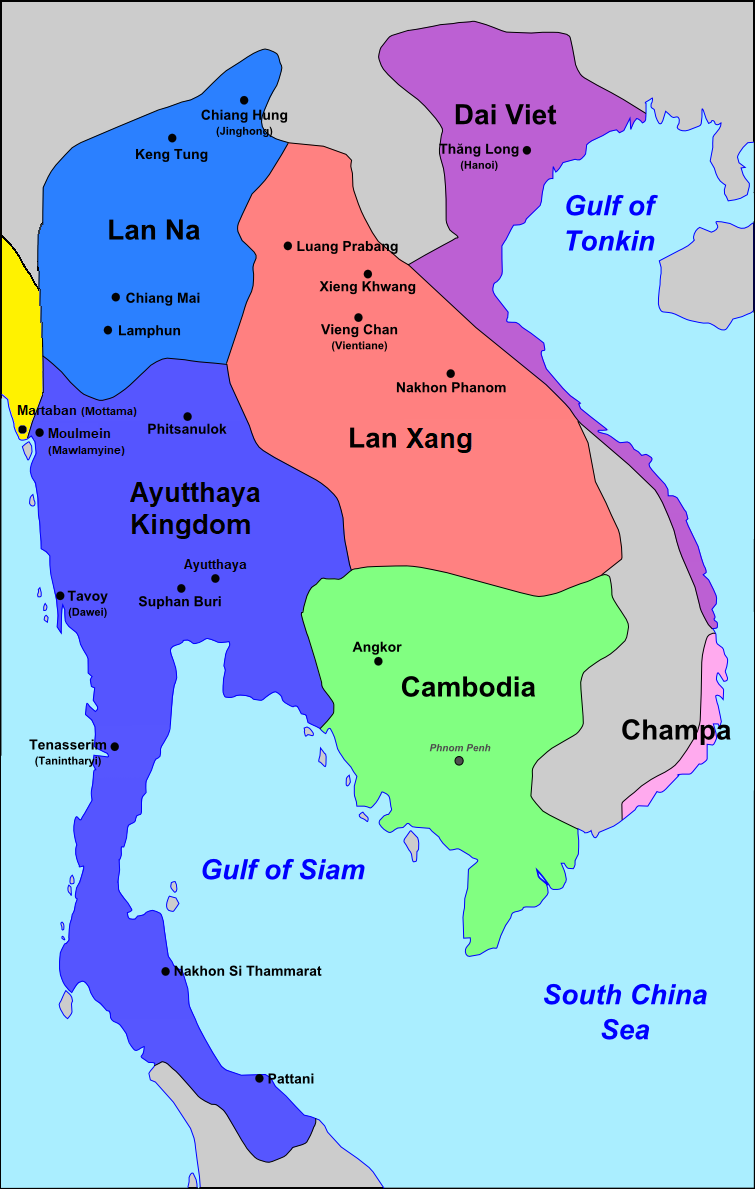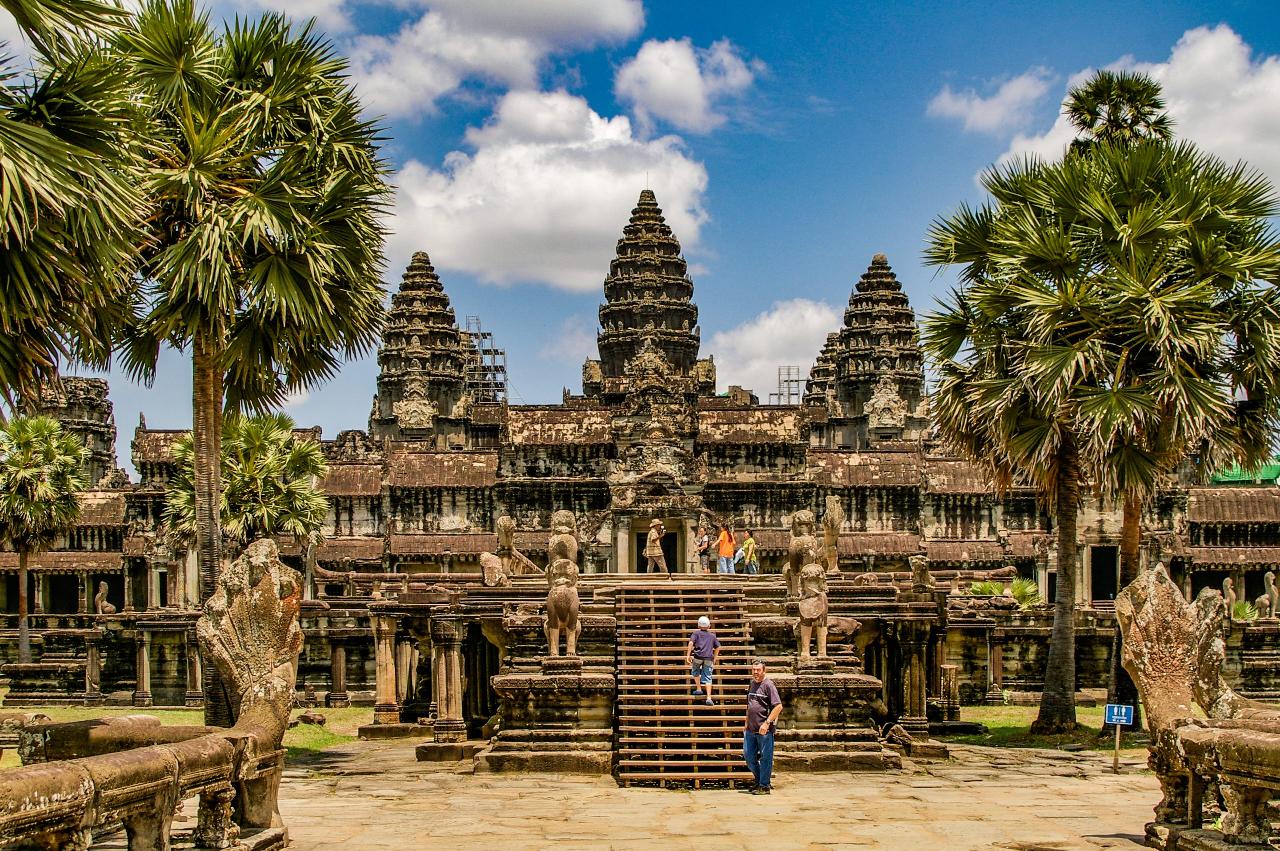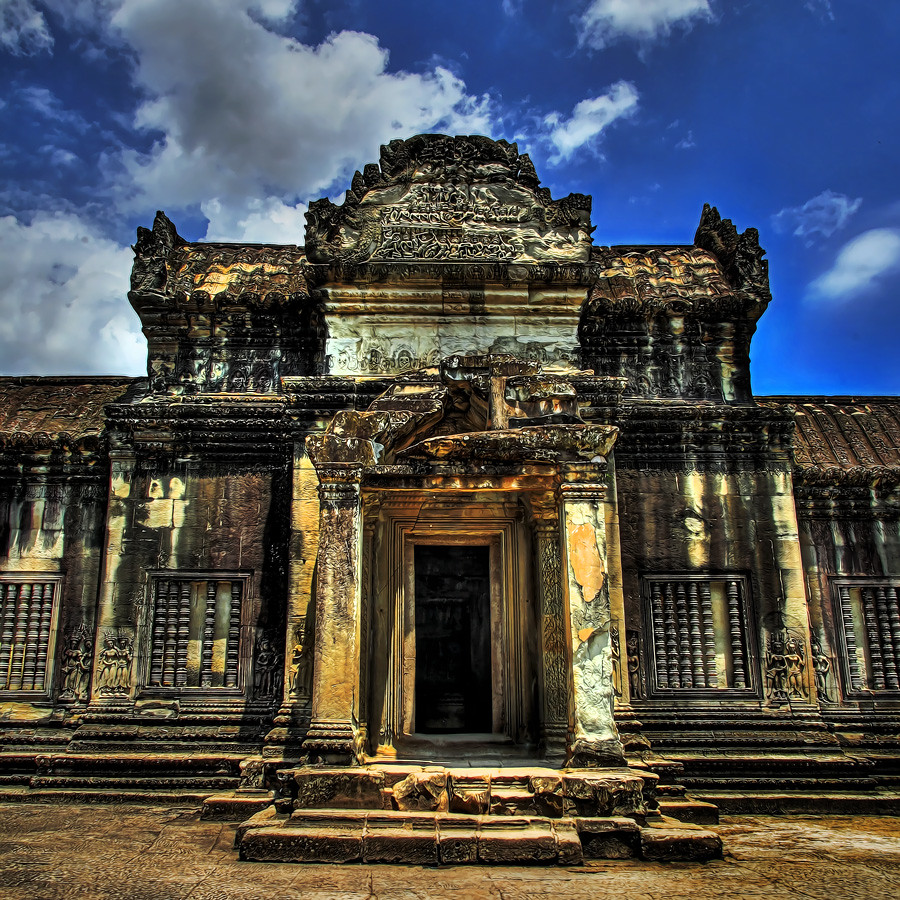
AsianOverland.net
Tour Guide - Itinerary
Asian Overland Sydney to London
Started 22/06/2022 Finished 21/06/2023365 Days ITINERARY
Day 63 date 23/08/2022PATTAYA, THAILAND to ANGKOR WAT, CAMBODIA
ASIANOVERLAND.NET SYDNEY TO LONDON DAY 63: ANGKOR WAT, CAMBODIA
The Cambodian monarchy had been in existence for 2,000 years since at least 68 AD until the Americans launched a coup against King Norodom Sihanouk in 1970 and replaced him with its puppet, General Lon Nol. King Norodom Sihanouk lived in exile during American, Pol Pot, Khmer Rouge and Vietnamese rule until he was reinstated as King of Cambodia with United Nations support in 1993.
The Khmer Empire included Cambodia from the 9th to the 15th centuries, when the nation was a Hindu-Buddhist empire in Southeast Asia and ruled over or colonised most of mainland Southeast Asia and parts of Southern China, from the tip of the Indochinese Peninsula north to the modern Yunnan province of China, and from Vietnam west to Burma (Myanmar). At its peak, the Khmer Empire was larger than the Byzantine Empire/Eastern Roman Empire.
The Khmer Empire’s most notable legacy is Angkor, Cambodia, the Khmer capital during the Empire's peak. The majestic monuments of Angkor, including Angkor Wat and Bayon, illustrate the Khmer Empire's immense power, wealth, art, culture, architectural technique, aesthetic achievements and belief systems. During its peak in the 11th to 13th centuries, Angkor was the largest urban centre in the world and had the world's best healthcare system, including 102 hospitals.
The Khmer Empire started in 802, when King Jayavarman II declared himself chakravartin ("universal ruler", or "emperor") in the Phnom Kulen mountains. The end of the Khmer Empire was 629 years later, the Siege of Angkor by the Siamese Ayutthaya Kingdom, in 1431.
Jayavarman II (802–835) conducted a grandiose consecration ritual in 802 on the sacred Mount Mahendraparvata, now known as Phnom Kulen, to celebrate the independence of the Khmers from Java. At that ceremony Jayavarman II was proclaimed a universal monarch or God King.
He declared himself Chakravartin in a ritual taken from the Hindu tradition, thereby not only becoming the divinely appointed and uncontested ruler, but also simultaneously declaring the independence of his kingdom from Java. Jayavarman II had lived in Java during the reign of Sailendras, who ruled over Java, Sumatra, the Malay Peninsula and parts of Cambodia including the fertile Mekong delta.
Khmer independence from Java heralded the start of an arms race in the form of a temple race, as the Javanese built Borubudur and Prambanan for their God Kings, while the Khmers built imposing temples culminating in Angkor Wat for their God Kings.
Yasovarman I (reigned 889 – 915) established a new capital, Yasodharapura (Angkor). The city's central temple was built on Phnom Bakheng, a hill which rises 60 m above the plain on which Angkor sits. Under Yasovarman I, the East Baray was also created, a massive water reservoir of 7.1 km by 1.7 km.
Rajendravarman II (reigned 944–968) established a series of temples in the Angkor area, including East Mebon, located on an artificial island in the centre of the East Baray, and several Buddhist temples, such as Pre Rup, as well as monasteries. In 950, the first war took place between the Khmer Empire and the kingdom of Champa to the east (in central Vietnam).
Under Suryavarman II (reigned 1113–1150) the Khmer kingdom built the largest temple of Angkor - Angkor Wat, as his state temple and eventual mausoleum.
Angkor Wat (meaning "Temple City") is the largest religious monument in the world, on a 163 hectare site (1,626,000 m2; 402 acres). Breaking from Shaiva tradition of previous kings, Angkor Wat was dedicated to Vishnu.
Angkor Wat combines two mainstays of Khmer temple architecture: the temple-mountain and the galleried temple. It is designed to represent Mount Meru (near Kashmir/Himalayas), home of the Gods in Hindu mythology and the sacred five-peaked mountain of Hindu, Jain, and Buddhist cosmology, considered to be the centre of all the physical, metaphysical and spiritual universes:
"The Sun along with all the planets circle the mountain"
In Buddhism, the Sun and the Moon revolve around Mount Meru, and as the Sun passes behind it, it becomes nightime.
Within a moat more than 5 kilometres long and an outer wall 3.6 kilometres long, are three rectangular galleries, each raised above the next. At the centre of the temple stands a quincunx of towers, five points arranged in a cross, with four of them forming a square and a fifth at its centre.
As the best-preserved temple at the site, Angkor Wat is the only one to have remained a significant religious centre since its foundation. The temple played a major role in converting Cambodia into a Buddhist nation, and is one of the most important pilgrimage sites for Buddhists in Cambodia and around the world,.
By the 14th century, the Khmer empire suffered a long and steady decline, possibly due to internal power struggles among Khmer princes, vassal revolt, foreign invasion, drought and ecological breakdown.
The last Sanskrit inscription is dated 1327. With the kings' adoption of Buddhism, they were no longer considered Hindu God Kings, and there was no need to erect huge temples to them, nor to the Hindu gods. The retreat from the concept of the God King led to a loss of royal authority and a lack of workers. The water-management apparatus degenerated, reducing harvests by floods or drought. While previously three rice harvests per year were possible, the declining harvests weakened the Khmer Empire and its temples eventually become overgrown by rainforests.
© This work is copyright. Apart from any use permitted under the Copyright Act 1968, no part may be reproduced by any process, nor may any other exclusive right be exercised, without the permission of Peter Searle, peter@portseavillageresort.com; 1980-2024.
Website built by Justin O’Dea www.webdeveloperdocklands.com.au





.jpg)